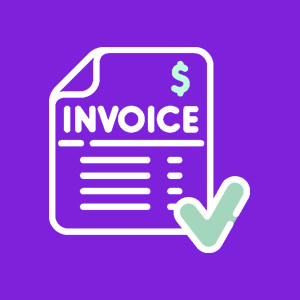 In recent years, the landscape of invoicing software has undergone significant changes, driven by technological advancements and the growing needs of businesses. The traditional manual invoicing processes are being replaced by sophisticated, automated solutions that not only streamline the billing process but also enhance overall efficiency. In this article, we will delve into the key changes and trends in invoicing software, exploring why these tools are indispensable for modern businesses. Additionally, we will highlight the top five invoicing software solutions, along with a few noteworthy alternatives.
In recent years, the landscape of invoicing software has undergone significant changes, driven by technological advancements and the growing needs of businesses. The traditional manual invoicing processes are being replaced by sophisticated, automated solutions that not only streamline the billing process but also enhance overall efficiency. In this article, we will delve into the key changes and trends in invoicing software, exploring why these tools are indispensable for modern businesses. Additionally, we will highlight the top five invoicing software solutions, along with a few noteworthy alternatives.
Changes and Trends in Invoicing Software
- Automation and AI Integration: One of the most prominent trends in invoicing software is the integration of automation and artificial intelligence (AI) capabilities. Automation streamlines repetitive tasks, such as invoice generation and data entry, reducing the likelihood of errors and freeing up valuable time for businesses. AI technologies, on the other hand, enable smart features like predictive invoicing and automated follow-ups, making the entire invoicing process more intelligent and efficient.
- Cloud-Based Solutions: The shift towards cloud-based invoicing software has been a game-changer for businesses of all sizes. Cloud solutions offer the advantage of accessibility from anywhere, facilitating remote work and collaboration. Moreover, cloud-based systems provide real-time updates, ensuring that users always have the latest information at their fingertips. This trend has significantly improved the scalability and flexibility of invoicing processes.
- Mobile Invoicing: With the rise of mobile technology, invoicing software has become increasingly mobile-friendly. Mobile apps allow users to create, send, and track invoices on the go, providing flexibility and convenience. This trend is particularly beneficial for freelancers and small business owners who may not always have access to a desktop computer but need to manage their invoicing efficiently.
- Enhanced Security Features: As cyber threats become more sophisticated, invoicing software has adapted by incorporating robust security measures. Encryption, secure payment gateways, and multi-factor authentication are now standard features in many invoicing tools. These measures not only protect sensitive financial information but also instill confidence in businesses and their clients.
- Integration with Accounting Software: Seamless integration with accounting software has become a crucial aspect of modern invoicing tools. This integration ensures that financial data flows seamlessly between invoicing and accounting systems, reducing the risk of errors and saving time on manual data entry. It also provides a holistic view of a business’s financial health by consolidating invoicing and accounting information.
Top 5 Invoicing Software Solutions
- FreshBooks: FreshBooks is a cloud-based accounting and invoicing solution designed for small businesses and freelancers. It offers features such as time tracking, expense management, and client communication, making it a comprehensive solution for entrepreneurs.
- QuickBooks: QuickBooks, developed by Intuit, is a widely used accounting software that includes robust invoicing features. It caters to businesses of all sizes and integrates seamlessly with various third-party applications, providing a scalable solution for growing enterprises.
- Zoho Invoice: Zoho Invoice is a user-friendly invoicing software that is part of the broader Zoho suite of business applications. It offers customization options, project tracking, and the ability to accept online payments, making it suitable for small to medium-sized businesses.
- Wave: Wave is a free invoicing and accounting software targeted at freelancers and small business owners. It provides a range of features, including invoice customization, receipt scanning, and the ability to track income and expenses.
- Xero: Xero is a cloud-based accounting software that includes invoicing as one of its core features. It is known for its user-friendly interface, extensive integrations, and real-time collaboration capabilities, making it a popular choice for businesses seeking a comprehensive financial solution.
Additional Invoicing Tools to Consider
- Harvest: Harvest is a time tracking and invoicing tool that caters to both freelancers and small businesses. It offers features such as expense tracking, project management, and integrations with popular accounting software.
- AND CO: AND CO is an invoicing tool designed for freelancers and independent contractors. It includes contract management, time tracking, and expense tracking features, providing a holistic solution for solo professionals.
- Invoicely: Invoicely is a straightforward invoicing tool that caters to small businesses and freelancers. It offers customizable invoice templates, expense tracking, and the ability to accept online payments.
Conclusion
The changes and trends in invoicing software reflect the dynamic nature of the business landscape, where efficiency, security, and accessibility are paramount. As businesses continue to evolve, the demand for innovative invoicing solutions will persist, driving further advancements in the field. The top five invoicing software solutions mentioned, along with additional tools, showcase the diversity of options available, allowing businesses to choose the solution that best aligns with their specific needs and preferences.
